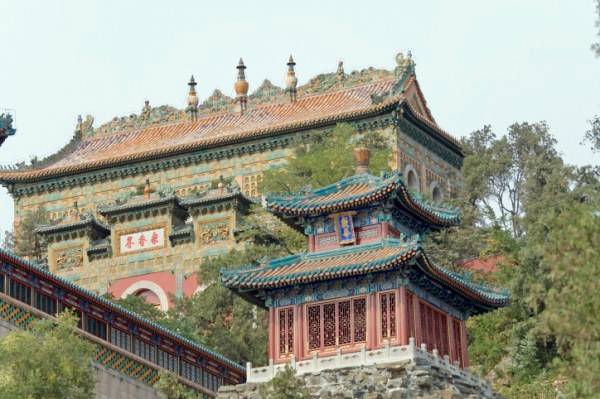Top 10 Beautiful Palaces Around the World
The
word PALACE is derived from the Latin name Palatium, for Palatine Hill,
one of the seven hills in Rome. A palace is a grand residence,
especially a royal residence or the home of a head of state or some
other high-ranking dignitary, such as a bishop or archbishop. In many
parts of Europe, the term is also applied to relatively large urban
buildings built as the private mansions of the aristocracy. Here is a
collection of top 10 palaces around the world.
10. Winter Palace, St. Petersburg, Russia
The
Winter Palace in Saint Petersburg, Russia was the official residence of
the Russian Tsars. It was designed by many architects, most notably
Bartolomeo Rastrelli, in what came to be known as the Elizabethan
Baroque style; the green-and-white palace has the shape of an elongated
rectangle. The palace has been calculated to contain 1,786 doors, 1,945
windows, 1,500 rooms and 117 staircases. Its principal façade is 250 m
long and 100 ft high. 09 more after the break...
09. Summer Palace, Beijing, China
The
Summer Palace is the largest and best-preserved imperial garden in
China. Its Chinese name, YiHeYuan, translates as ‘Garden of Nurtured
Harmony’ or ‘Garden for Maintaining Health and Harmony’. As its name
implies, the Summer Palace was used as a summer residence by China’s
imperial rulers – as a retreat from the main imperial palace now known
as the Palace Museum (or ‘Forbidden City’) – a pleasure ground in the
countryside, yet near to the city.
08. Schonbrunn Palace, Vienna, Austria
Schönbrunn
Palace is a former imperial summer residence in Vienna, Austria.
Schönbrunn Palace with its surrounding buildings and the huge park is
one of the most significant cultural monuments in Austria. The castle
was build to rival French Versailles in Baroque beauty and importance.
07. Potala Palace, Lhasa, Tibet
The
Potala Palace, winter palace of the Dalai Lama since the 7th century,
symbolizes Tibetan Buddhism and its central role in the traditional
administration of Tibet. The complex, comprising the White and Red
Palaces with their ancillary buildings, is built on Red Mountain in the
center of Lhasa Valley, at an altitude of 3,700m.
06. Imperial Palace, Tokyo, Japan
Tokyo
Imperial Palace is the main residence of the Emperor of Japan. It is a
large park-like area located in Chiyoda, Tokyo close to Tokyo Station
and contains various buildings such as the main palace and the private
residences of the imperial family. The total area including the gardens
is 7.41 square kilometers.
05. Taj Lake Palace, Udaipur, India
Udaipur,
the jewel of Rajasthan, has a regal feeling even in the streets and
marketplace, a sense of pride surrounding every shop and square. Lake
Palace (formerly known as Jag Niwas) is a luxury hotel, of 83 rooms and
suites featuring white marble walls, located on a natural foundation of 4
acres rock, which sits on a private island in the middle of Lake
Pichola. The hotel operates a boat which transports guests to the hotel
from a jetty at the City Palace.
04. Dolmabahce Palace, Istanbul, Turkey
The
Dolmabahçe Palace in Istanbul, Turkey, located at the European side of
the Bosporus, served as the main administrative center of the Ottoman
Empire. The palace is composed of three parts; the Mabeyn-i Hümâyûn (the
quarters reserved for the men), Muayede Salonu (the ceremonial halls)
and the Harem-i Hümâyûn (the apartments of the family of the Sultan).
The palace has an area of 45,000 m2, and contains 285 rooms, 46 halls, 6
baths and 68 toilets.
03. Chateau de Versailles, Versailles, France
The
Palace of Versailles was the official residence of the Kings of France.
It was originally a hunting lodge, built in 1624, by Louis XIII. It was
expanded by Louis XIV beginning in 1669. He used it as a little lodge
as a secret refuge for his amorous trysts with the lovely Louise de la
Valliere and built a fairy tale park around it. Jules Hardouin Mansart,
the king’s principal architect, drew the plans to enlarge what was
turning more and more into a palace from A Thousand and One Nights.
02. Buckingham Palace, London
Buckingham
Palace is the official London residence of the British monarch. Located
in the City of Westminster, the palace is a setting for state occasions
and royal hospitality. It has been a rallying point for the British
people at times of national rejoicing and crisis.
01. Blenheim Palace, Oxfordshire, United Kingdom
Blenheim
Palace is home to the 11th Duke and Duchess of Marlborough and the
birthplace of Sir Winston Churchill. Set in 2100 acres of beautiful
parkland landscaped by ‘Capability’ Brown, the magnificent Palace is
surrounded by sweeping lawns, award-winning formal gardens and the great
Lake, offering a unforgettable day out for all.





























